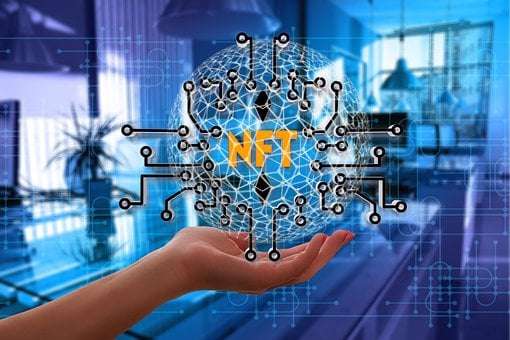- By leveraging blockchain technology, NFTs can provide a secure and transparent way for donors to give to their favorite causes.
- MetaRaft, intends to unlock a donation model through NFTs wherein 50% of the proceeds from the sale will be donated to the Bill Me Foundation LLC.
Non-fungible tokens, better known as NFTs, have been making headlines over the last two years for their role in catalyzing the digital art market. They were originally introduced as a way to tokenize digital artwork, giving creators control over ownership and authenticity while allowing buyers to purchase and own a one-of-a-kind masterpiece or collectible.
As the market for NFTs began to grow, so did the prices of these digital assets. In the last couple of years, there have been numerous instances where NFTs changed hands for exorbitant prices, leading to the stereotype of NFTs being associated with overpriced artworks and collectibles. To put this into perspective, a digital work by an artist named Beeple fetched $69 million at Christie’s auction house in early 2021.
However, as the technology behind NFTs continues to mature, we are seeing a steady rise in the number of new and exciting use cases. Despite the initial hype and the stereotype, today’s NFTs exhibit much more utility and application than their digital collectible predecessors.
Charity, low-risk sports predictions, and fractionalizing fine art investing are just a few examples of how NFTs are utilized across various industries, providing new opportunities for individuals, organizations, and businesses.
NFTs Have Traversed Beyond the Art World
One of the most promising applications of NFTs is in the realm of charitable giving. By leveraging blockchain technology, NFTs can provide a secure and transparent way for donors to give to their favorite causes while also allowing them to collect unique digital assets as a symbol of their generosity.
An upcoming NFT project, MetaRaft, is using this technology to support charitable causes. The platform intends to unlock a donation model through NFTs wherein 50% of the proceeds from the sale will be donated to the Bill Me Foundation LLC – a non-profit organization working towards providing medical aid and treatment to people in need.
The platform plans on donating $150,000 to $400,000 to the non-profit, contributing towards the organization’s efforts to cover medical costs for needy individuals and families, fund research, and offer financial aid to treatment centers. At the same time, MetaRaft will offer NFT holders a 25% chance to get their money back after redeeming their mints. The platform will launch 10,000 NFTs each month and hold monthly sweepstakes for NFT holders to win prizes ranging from $250 to $100,000 worth of USDC stablecoins.
Another area where NFTs are gaining momentum is in the prediction markets. Traditional prediction markets are generally considered high-risk options accompanied by high reward potential and high loss possibility. However, the emerging blockchain project Pooky is leveraging NFTs to shift this dynamic.
Built on the Polygon blockchain, Pooky is a football results prediction game that allows players to use 3D digital collectibles to make and boost predictions, win experience points, and compete with one another for the top position on the monthly leaderboards. As they progress through the ranks, players can level up, customize, craft, and increase the value of their NFTs to earn further rewards.
Using NFTs, Pooky provides a new way for sports fans to engage with their favorite teams and players while potentially earning rewards for their predictions. What makes Pooky unique is its risk-free model. Although it allows users to make predictions, the players don’t need to be 100% correct to win, and they always win something. This gives the game a global reach and promotes a more rewarding alternative to traditional sports betting, which is very black and white.
Finally, there is another exciting use case of NFTs – this time in the world of fine art investing. Traditional fine art investing is quite exclusive and often limited to the ultra-rich. However, Web3 project Artfi is working to change this by tokenizing famous high-value artworks as NFTs, which are then sold to the public.
Artfi, founded in 2022 by Asif Kamal, a prominent gallerist of South Asian art, is harnessing the power of NFTs and blockchain technology to democratize the $1.7 trillion fine art and collectibles market. Backed by prominent artist and humanitarian Sacha Jafri, Artfi is on a mission to make fine art investing more accessible and to replace the cumbersome characteristics of the fine art market with a more intelligent, user-friendly tokenized ecosystem.
The platform’s use of NFTs as a medium has enabled the average investor to access the exclusive blue-chip fine art market and diversify their portfolios, further empowering and democratizing the art market.
Based on the use cases unlocked by emerging projects, it is no hyperbole to claim that although NFTs began as a niche market for digital art and collectibles, they have quickly evolved to be much more than that. As the underlying technology continues to advance, it is becoming increasingly evident that NFTs have the potential to democratize various markets and provide novel solutions.


